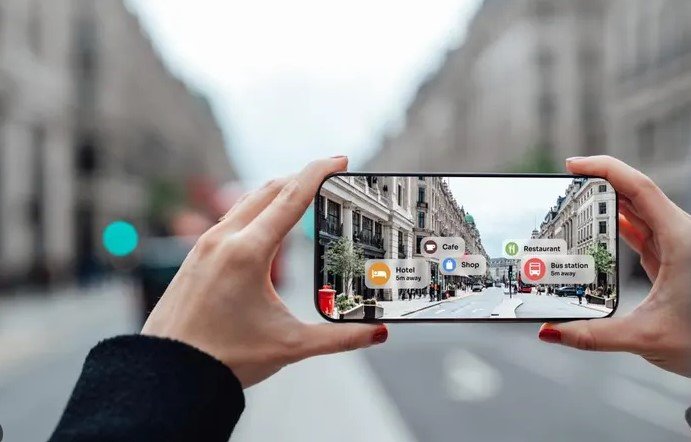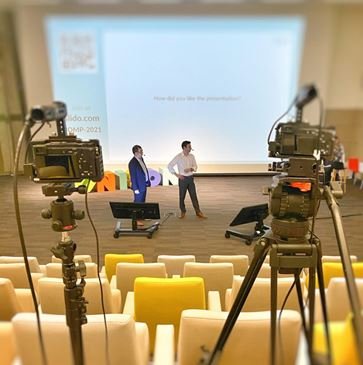Multimedia in enhancing user experience has become a pivotal tool in modern design, revolutionizing how people interact with digital platforms. By integrating text, images, video, sound, and animations, multimedia creates more engaging, dynamic, and user-friendly environments. As businesses and creators seek to improve engagement and satisfaction, multimedia has proven indispensable. In this post, we will discuss the role of multimedia in enhancing user experience, its benefits, and how it shapes digital interaction.

Visual Appeal and Interactivity
Multimedia in enhancing user experience significantly boosts visual appeal and interactivity, drawing users into the digital space. Websites, applications, and social media platforms utilize high-quality images, videos, and animations to make content more appealing and engaging. A well-designed interface with vibrant multimedia elements captures attention, ensuring that users stay on the platform longer and explore its offerings.
For example, online shopping websites use product videos and high-resolution images to offer a more immersive browsing experience. Interactive elements, like clickable icons or scrolling animations, keep users actively engaged with the content. Incorporating multimedia elevates static text-based websites, creating an interactive experience that resonates with modern consumers.
Simplifying Information Delivery
Multimedia in enhancing user experience plays a crucial role in simplifying the delivery of complex information. Videos, infographics, and animations provide visual representations of intricate data, making it easier for users to understand. This approach appeals to both visual and auditory learners, offering diverse ways to process information.
A great example is how educational platforms use explainer videos or infographics to teach concepts that may otherwise be challenging through text alone. Tutorials that combine screen captures, voice-over instructions, and text guidance streamline the learning process. By simplifying how information is presented, multimedia reduces cognitive load, making content more digestible and enjoyable.
Emotional Connection and Engagement
The emotional impact of multimedia in enhancing user experience cannot be overstated. Music, video, and imagery stir emotions that plain text cannot, deepening the connection between users and the content. Whether through a moving background score in a promotional video or a compelling animation that tells a story, multimedia creates memorable experiences that forge emotional ties.
For example, brands often use videos with emotional narratives to connect with their audience on a deeper level. A compelling multimedia ad that evokes emotions such as joy, nostalgia, or inspiration leads to higher user engagement and brand loyalty. Engaging multimedia content not only informs but also entertains, making the user experience both fulfilling and memorable.
Boosting Accessibility
Multimedia in enhancing user experience also plays a critical role in improving accessibility for users with different needs. By offering alternative formats such as audio descriptions, subtitles, or transcripts, multimedia ensures that content reaches a broader audience. This approach enables platforms to be more inclusive, allowing users with visual, auditory, or cognitive disabilities to engage meaningfully.
For instance, many websites include videos with closed captions to cater to users who are hearing-impaired. Similarly, podcasts and other audio content are paired with transcriptions, benefiting those who prefer reading over listening. In this way, multimedia ensures that digital experiences remain accessible and user-friendly for everyone.
Challenges and Future Trends
While multimedia in enhancing user experience offers numerous benefits, it also presents challenges. One of the most pressing challenges is ensuring that multimedia elements do not hinder site performance. Large media files can slow down loading times, negatively impacting the overall user experience. Designers must strike a balance between enriching the platform with multimedia and maintaining optimal performance.
Looking to the future, multimedia will continue to evolve with technologies like augmented reality (AR), virtual reality (VR), and artificial intelligence (AI). These advancements promise to take user experience to the next level, providing immersive and personalized experiences that adapt to individual preferences and behaviors. As multimedia continues to integrate into user interfaces, its ability to enhance and transform experiences will only grow.
Conclusion
In conclusion, multimedia ux is essential in creating more interactive, engaging, and accessible digital environments. By combining visual appeal, simplifying information delivery, fostering emotional connections, and improving accessibility, multimedia transforms how users interact with platforms. However, designers must also navigate the challenges of performance optimization to ensure a seamless user experience. As technology evolves, multimedia will continue to be at the forefront of shaping user experiences, offering new and innovative ways to engage and captivate audiences.











